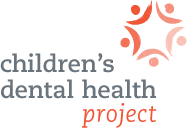Public Health Officials Reconfirm Value of Water Fluoridation While Adjusting Recommended Levels
FOR IMMEDIATE RELEASE
Recognizing Community Water Fluoridation as one of the nation's top 10 public health achievements of the 20th Century, the U.S. Government released updated scientific findings and recommendations for public water systems. The Centers for Disease Control and Prevention (CDC) notes that widespread use of fluoridated toothpaste now allows for reduced levels of fluoride delivered in water.
"Updating water fluoride levels to better reflect today’s environment makes good sense. This adjustment keeps the tremendous benefits of water fluoridation for all of us while recognizing that circumstances have changed since fluoridation began decades ago” said Burton Edelstein, President of the Children’s Dental Health Project. “The Children's Dental Health Project applauds the collaborative efforts of the U.S. Department of Health and Human Services (HHS) and the Environmental Protection Agency (EPA) to use the latest science to update their public health recommendation. Since childhood tooth decay remains the single most chronic condition in the U.S., optimizing prevention at the right level of fluoride is a win for America’s children” added Dr. Edelstein.
The Goverrnment’s action reaffirms the proven benefits of fluoridation for all Americans. Water fluoridation is particularly beneficial during childhood and in adolescence when cavity experience first begins. Not only do children who drink fluoridated water have fewer cavities but their cavities are smaller and less deep when they do occur. Community water fluoridation continues to be one of the few oral health preventive approaches that can reach all children in communities nationwide, regardless of their socio‐economic status or access to dental care.
“In no way does this adjustment mean that public health authorities are backing off of their commitment to fluoridating water” said Edelstein. “In fact, capping water levels at the newly recommended level (0.7 parts per million) is the best way to meet children’s needs while also reducing the chance that a child will develop fluorosis. Edelstein added that “Parents can take steps to limit the chance of fluorosis from toothpaste by supervising tooth brushing.”
The Children’s Dental Health Project is national non‐profit organization dedicated to creating and advancing innovative solutions to achieve oral health for all children to ensure that they reach their full potential. It Visit the CDHP website at www.cdhp.org or contact Colin Reusch at 202-833-8288 x 202.
###
